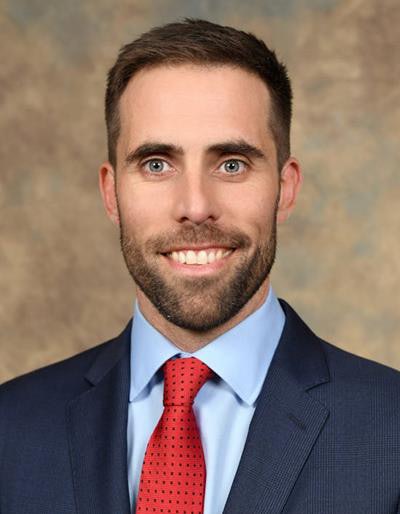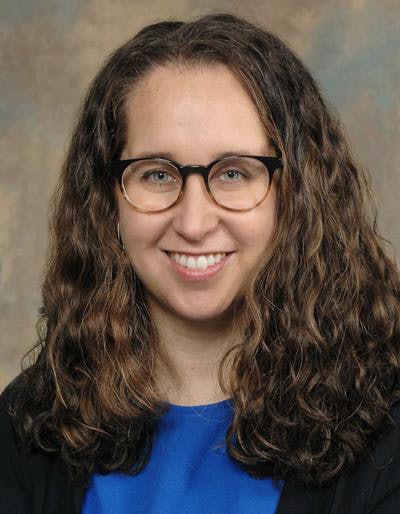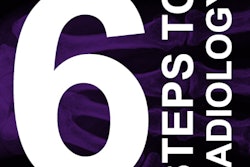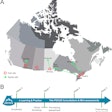
6 Steps to Radiology is a series of six articles that will run throughout the 2018-2019 academic year to help medical students find their ideal radiology residency program. It includes answers to common questions that radiology program directors and advisers have been asked; some advice reflects the personal opinions of the authors.
At this time, most third-year medical students have chosen or significantly narrowed down their list of potential medical/surgical specialties to pursue. With a narrower focus on potential career paths that include radiology, students should now obtain a deeper understanding of diagnostic/interventional radiology to come to that final decision.
The first step toward this enlightenment is finding an adviser in the field of radiology, if you have not already found one. This adviser can help you cement your decision to pursue radiology, provide guidance on research and fourth-year schedule planning, and offer advice on maximizing the potential of your Electronic Residency Application Service (ERAS) application.
Finding an adviser
 Dr. Eric England.
Dr. Eric England.Third-year medical students who are seeking an adviser should look for radiology program coordinators; they can serve as a great resource to identify who in the department is available to provide guidance. The medical student dean's office also frequently keeps a list of radiologists who are willing to advise medical students. Students should not feel limited to just one adviser and should consider actively seeking out guidance from multiple radiologists, each of whom can add a different perspective on the field and application process.
One of the most frequently utilized advisers in a radiology department is the residency program director. Program directors have the most insight into the application process and can be a vital tool in assessing the competitiveness of your application. Students should use program directors of both diagnostic radiology (DR) and diagnostic radiology/interventional radiology (DR/IR) if they are considering applying to both DR and DR/IR residency positions.
Junior faculty members are a great resource for medical students as they have recently navigated the application process and completed residency. They will typically have a better idea of the current radiology job market and can provide advice on the opportunities available after graduation from residency.
“Mentoring is a brain to pick, an ear to listen, and a push in the right direction.”
Some academic radiology departments have active research divisions. Setting up a time to meet with radiologists involved with research in the radiology department can provide you opportunities to assist on numerous projects.
Finally, radiology residents can also provide unique perspectives on the field of radiology and the application process. Radiology residents are usually busy with the day-to-day work in the department, but most should be willing to provide insight into specific questions you have about the field. Take full advantage of your radiology clerkships by not only expanding your knowledge of the radiology field but also engaging in discussions with residents about why they chose the field and what advice they could offer on the application process.
To research or not to research
Research projects and teaching activities are great -- but not necessary -- additions to your application. When possible, wrap up as many projects as you can before the application deadline. Demonstrating that you can see longitudinal activities through to completion will reflect well on you as an applicant.
Never allocate time to pursue research endeavors or other extracurricular activities at the expense of your third-year clerkship grades.
Finishing your third year strong
Program directors consider clerkship grades one of the top criteria when evaluating potential applicants. High marks -- especially at the end of your third year -- can have numerous downstream positive impacts on your application, including your dean's letter, class rank, and letters of recommendation.
Given the importance and relative lack of standardization of clerkship grades, maximizing performance is crucial and should be the primary focus of your effort in the third year. The following tips will help you finish strong:
- Arrive early and stay late. This holds true for clerkships and beyond.
- Be a team player. There is no such thing as scut work. Do whatever you can to help residents, fellow medical students, nurses, patients, and families.
- Be enthusiastic. Make sure your interest in medicine and compassion for patients is clear to anyone with whom you interact.
- Study hard. Stay on top of your patient workload, be prepared for conferences, and do everything you can to ace the "shelf" exams.
Planning for the future
After making the decision to pursue a radiology residency, you will want to begin strategically planning your fourth year.
 Dr. Carl Flink.
Dr. Carl Flink.While completing four or five radiology rotations is not necessary, and probably not possible given intrinsic medical school requirements for the fourth year, it is important to have at least one dedicated radiology rotation early in the fourth year. This will not only enable you to get a better idea of what it means to be a radiologist and a radiology resident but will also allow the radiology department to get to know you as an interested applicant.
Whether or not to do away rotations is a complex question. Some medical schools do not allow or encourage this, while others do. If you are strongly considering a particular program or geographic region, an away rotation may help your chances in securing a position there. It is important to make the most of the away rotation -- be an engaged learner and a proactive student. Consider it an informal, prolonged interview. Be memorable, but hopefully in a good way!
Scheduling radiology rotations early in the fourth year will also enable you to make connections with radiology faculty and staff. This becomes important when collecting letters of recommendation for the ERAS application. The earlier you can make these connections and relationships with attendings, the more meaningful your letters of recommendation can be. While not necessary, you may want to schedule a meeting with the radiology residency program director, either at your home institution or an away rotation at the end of a block, to help the director put a face with your name as the application and interview season begins.
Planning your Step 2
 Dr. Alisa Kanfi.
Dr. Alisa Kanfi.The timing of when to take Step 2 in the fourth year may or may not be in your control, depending on school-specific rules and scheduling. If you are in a position to schedule Step 2 with flexibility, consider how it can impact your ERAS application. If you feel your Step 1 score is not reflective of your true test-taking capabilities, consider taking Step 2 early in the year so that an improved score is available for the initial ERAS application review. Otherwise, if you feel your Step 1 score is where it needs to be, taking Step 2 later in the year is also acceptable.
The spring of your third year can be extremely satisfying as your future career path comes into focus. Taking the time now to successfully plan the next steps in maximizing the potential of your application will pay dividends down the road.
Dr. Eric England is the program director for the diagnostic radiology residency at the University of Cincinnati. He is the Jerome F. Wiot Endowed Chair of Residency Education and is an associate professor of diagnostic radiology. He is a member of the Alpha Omega Alpha honor society, has published multiple peer-reviewed articles, and is the former Joseph E. and Nancy O. Whitley award winner for research in the field of radiology education.
Dr. Carl Flink is the associate program director for the diagnostic radiology residency at the University of Cincinnati. He is an assistant professor of radiology, the section chief of the emergency radiology division, and the program director of the emergency radiology fellowship. His primary interests include resident education and examining unique challenges faced by off-hours radiologists.
Dr. Alisa Kanfi is the associate program director for the diagnostic radiology residency at the University of Cincinnati. She is an assistant professor of radiology and member of the neuroradiology section. Her research interests include functional imaging, head and neck imaging, and work-life balance.



















